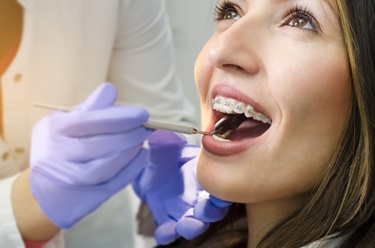Brace Yourself: Laser-assisted Orthodontics are Trending

The future of dentistry is laser orthodontics…
Since the 1960s, researchers have explored the possibility of enhancing conventional dental treatment with lasers in hopes of elevating the patient experience. The use of laser-assisted orthodontics is a relatively new concept, but as the range of capabilities expands, sophisticated orthodontists are catching on to laser efficiency and ease-of-use.
Diode lasers are increasingly being integrated into orthodontic practice, with numerous published studies demonstrating their advantages for aesthetic and soft tissue challenges. Lasers have many common applications in orthodontics including enamel etching, debonding of brackets, and pain management after orthodontic movement. Other common applications include:
Gingivectomy & Operculectomy
Lasers offer a minimally-invasive option for excising gingival tissue and deliver optimal healing and contour.
Papillae Augmentation
Papilla reshaping is typically performed in conjunction with gingivectomy or gingivoplasty. Lasers are precise and effectively treat bulbous or loose interdental papillae to enhance gingival aesthetics without damaging surrounding tissue.
Frenectomy & Frenotomy
Minimally-invasive lasers are ideal for treating a restricted or tight frenum.
Tooth Exposure
Lasers can significantly reduce treatment times for tissue removal.
Temporary Anchorage Device Uncovering
Lasers can be used for exposing TADS due to overgrowth of mobile mucosa. The result is optimal healing time and patient comfort.
Oral Hygiene
Poor oral hygiene is common in orthodontic patients and can result in gingival overgrowth, pseudo-pocket formation, and plaque retention problems. Lasers can be used to remove pseudo pockets and provide patients with better access to improve their oral health regimen.
Aphthous Ulcer Treatment
Low intensity lasers reduce pain associated with cold sores and lesions and reduce healing time.
Aesthetic Crown Lengthening
Lasers can precisely reshape gum tissue to expose healthy tooth structure and improve the appearance of a gummy display.
Teeth Whitening
Quality low intensity soft tissue lasers are outfitted with special attachments that can be used to speed up the lightening process.
TMJ Pain
A patient who has their mouth open for an extended period of time may experience myofascial pain, TMD symptoms, jaw stiffness, and earaches. Quality lasers can quickly reduce pain and inflammation of the temporomandibular joint with low-level laser therapy (LLLT). LLLT regenerates damaged nerves and blood vessels to provide an analgesic effect for pain management.
Clinicians interested in adopting lasers into their practice should obtain proficiency certification, attend CE courses, and observe laser safety regulations. It is the position of the ADA Council that practitioners obtain proper training on the use of dental laser devices, and that dentists use the devices within their licensed scope of practice, training, and experience.
Specific training is available from the Academy of Laser Dentistry and the World Clinical Laser Institute for continuing education.
Brace yourself for the future of dentistry. Join other like-minded dental professionals, researchers and developers who share a common desire for elevating the patient experience, improving clinical results, and delivering the best possible dentistry.
By BIOLASE
Link to Original Article
Back to all Clinical Articles
.png)
